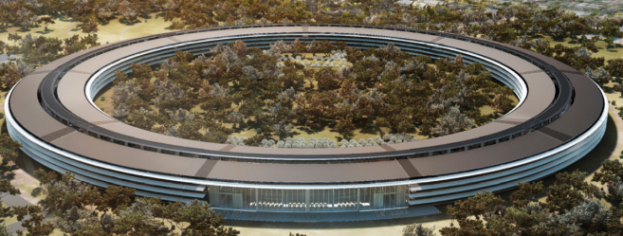 The latest update to the plans for the new Apple HQ was issued this week by the City of Cupertino, bringing the reality of a spaceship-like campus big enough for 13,000 workers a step closer to reality.
The latest update to the plans for the new Apple HQ was issued this week by the City of Cupertino, bringing the reality of a spaceship-like campus big enough for 13,000 workers a step closer to reality.
“Apple proposes to create Apple Campus 2 – an integrated 21st century campus surrounded by green space,” the updated plans said.
The information gave more details about its eye-catching circular roof, stating that it’ll be covered in photovoltaic solar panels, which, according to 9to5Mac, “puts it in the top corporate solar installations in the world and the biggest in the US.”
While the solar panel roof will be unable to provide enough energy to take care of all of the new HQ’s power needs, it’ll certainly go some considerable way to fulfilling the plan for the campus to take care of its own power generation.

The update, which was posted on the Cupertino.org website, stated that the new development would “provide a serene and secure environment reflecting Apple’s values of innovation, ease of use and beauty. The state-of-the-art office, research and development facilities include strategies to minimize energy demand, reduce car travel and increase the use of reclaimed water.”
Amenities for employees will include a “striking cafe within the main building, a separate corporate fitness center and a corporate auditorium seating 1,000 people. Parking will be provided under the main building and in one multistory parking structure.”
Jogging paths have also been added to the site, 80 percent of which will be landscaped. The fitness center, while losing a floor, has gained 20,000 square feet of floor space, bring the total to 45,000 square feet.
The bold plan for the campus was first unveiled by Steve Jobs back in June in a pitch to members of Cupertino City Council when he stated that he wanted to help create a new HQ for Apple that would be “the best office in the world.”
It’s thought Apple’s 2.8-million-square-feet HQ could be ready by around 2015.
Editors' Recommendations
- Apple planning MacBook switcheroo with double-layer OLED panels
- Apple launches expansive Maps update for New York City and beyond
- Apple’s new Seattle campus may mean big things for Siri, artificial intelligence


